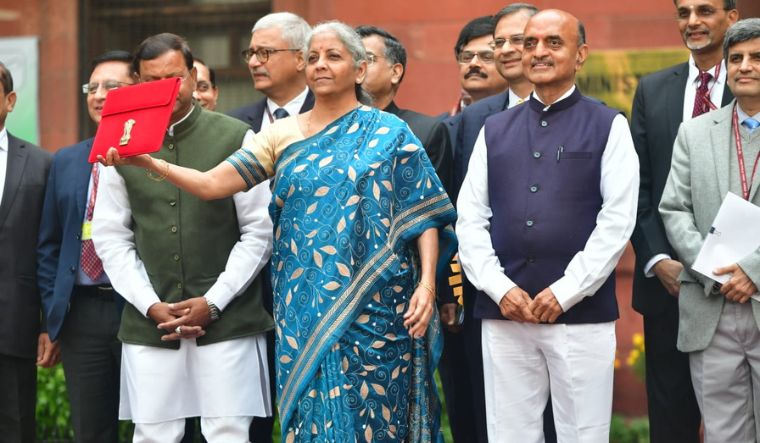
NEW DELHI: Nirmala Sitharaman, the Minister of Finance for the Government of India, presented the Interim Budget for 2024-2025 in the Lok Sabha.
Sitharaman initiated her budget speech by affirming that the Indian economy has undergone a profound positive transformation over the past decade, instilling hope and optimism for the future.
Addressing India’s infrastructure development, Sitharaman emphasised the substantial tripling of the capital expenditure outlay in the last four years, resulting in a significant multiplier effect on economic growth and employment creation. She announced an 11.1 per cent increase in the outlay for the next year, amounting to 11,11,111 crore, worth 3.4 per cent of the GDP.
The Finance Minister highlighted projects under the PM Gati Shakti initiative, focusing on multi-modal connectivity. She further announced the expansion of key rail infrastructure projects, including Metro Rail and NaMo Bharat, to additional cities, along with the conversion of approximately 40,000 rail bogies into Vande Bharat standard coaches.
In a strategic move towards sustainable transportation, the finance minister unveiled an ambitious plan to boost Electric Vehicles (EV) with initiatives concentrating on manufacturing and charging infrastructure, aiming to fortify and broaden the landscape for electric vehicles.
Sitharaman underscored the government’s efforts to revitalise the aviation sector over the past decade, noting that the number of airports had doubled to 149 during this period.
Enunciating the government’s approach towards all-round, all-pervasive, and all-inclusive development, Sitharaman announced a series of measures to promote green growth and renewable energy. She mentioned rooftop solarisation, enabling one crore households to receive up to 300 units of free electricity every month.
With the commitment to achieve ‘net zero’ by 2070, the finance minister proposed the following measures:
– Viability gap funding for harnessing offshore wind energy potential for an initial capacity of one Giga-Watt.
– Establishment of coal gasification and liquefaction capacity of 100 MT by 2030, aiming to reduce imports of natural gas, methanol, and ammonia.
– Mandating phased mandatory blending of compressed biogas (CBG) in compressed natural gas (CNG) for transport and piped natural gas (PNG) for domestic purposes.
– Providing financial assistance for the procurement of biomass aggregation machinery to support collection.
This was Sitharaman’s sixth budget in a row – five annual budgets and one interim budget. She surpassed the record of her predecessors such as Arun Jaitley, Manmohan Singh, P Chidambaram, and Yashwant Sinha, all of whom presented five budgets in the Parliament.

